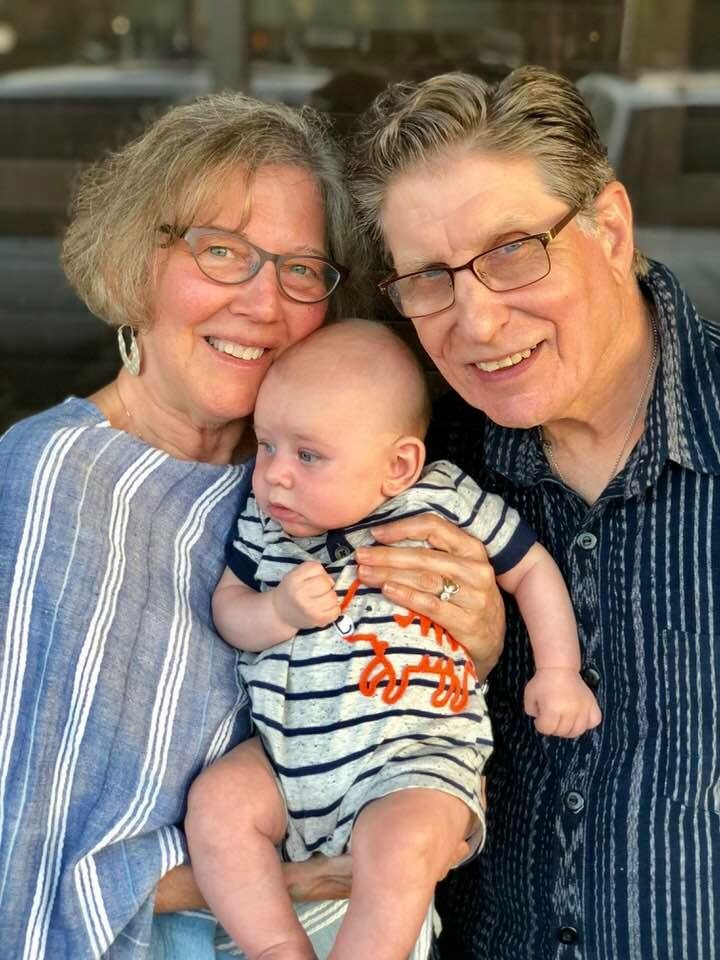When he was 67 years old, Barry Polsky said “I do” for the first time in his life when he married his wife, Randi. One year later, the retired high school teacher and lifelong baseball fan was offered one of his dream jobs as a tour guide at Fenway Park. And earlier this year, at the age of 72, he and his wife headed to South Africa for a 15-day excursion that included a safari.
Polsky says he’s grateful for all of these experiences — especially because he never would have imagined them possible when he was diagnosed with cancer nearly two decades prior.
In 2002, Polsky, then 55, was diagnosed with high-risk, localized prostate cancer. Prostate cancer is generally referred to by risk category; Polsky’s diagnosis meant that while his scans did not show definitive evidence that his cancer had spread beyond his prostate, there was a high risk it already had. This diagnosis is rare; most prostate cancers are low or intermediate risk.
“I heard cancer and I started planning my own funeral,” says Polsky. “I honestly thought this was it for me.”
The treatment plan
Doctors discovered the tumor after Polsky’s prostate-specific antigen (PSA) test revealed elevated levels of PSA in his blood. PSAs are created by the prostate, and higher levels can indicate prostate cancer. Oncologists use the test to plan treatment, judge its effectiveness, and monitor tumor growth.
Polsky began treatment at the Lank Center for Genitourinary Oncology at Dana-Farber/Brigham and Women’s Cancer Center (DF/BWCC). Hoping to cure Polsky of the cancer, he was put on a treatment plan of radiation therapy and androgen deprivation therapy. Androgen deprivation therapy is a type of hormone therapy designed to slow down or even block androgen production, which in turn can prevent cancer cell growth.

Chris Sweeney, MBBS, genitourinary oncologist at Dana-Farber and Polsky’s oncologist for the last seven years, says he often uses a car analogy to explain the treatment to his patients.
“Prostate cancer thrives on testosterone. If we think of the cancer cell as a car engine, the testosterone becomes the gas,” explains Sweeney. “By taking away the engine’s fuel supply, the car can no longer run.”
Initially, the treatment worked; by 2004, nearly two years after starting therapy, Polsky was in remission. He remained in remission for six years, but when his PSA levels jumped again in 2010, Polsky was met with disheartening news. The cancer had metastasized and spread to his bones.
A remarkable response
Polsky once again started hormone therapy, and now completes his treatment in two-year cycles: six months of therapy followed by a rest period of 18 months. The plan is designed to effectively treat his cancer and maintain his high quality of life; while the hormone therapy is effective, it causes side effects. Since starting the regimen in 2010, Polsky has remained in remission.
“If you told me 17 years ago that I’d still be alive, I’d say you were crazy,” says Polsky. “The hormone therapy has been difficult but having Randi has made all the difference in the world. She’s made me want to stick around for as long as I can.”
While Polsky has enjoyed a remarkable response, his results are not typical. Only 10% of metastatic prostate cancer patients experience more than 10 years of remission, with some tumors becoming immune to the therapy in as little as nine months.
Giving back
Polsky is working to make a difference in the lives of others, in the same way that Randi makes a difference in his. For more than a decade now, he has participated in the Boston Marathon® Jimmy Fund Walk presented by Hyundai, and serves as team captain for the Boston Prostate Cancer Walk Team. The money he’s raised has gone on to help Sweeney and his colleagues improve the standard of care for more patients with prostate cancer.
Recently, four new classes of drugs have been approved to treat the disease, and countless others are currently in development. One of the projects Sweeney’s team is currently working on is identifying the resistance mechanisms in prostate cancer tumors and blocking them from engaging. Sweeney hopes this will lead to longer response times and, ultimately, better outcomes for patients.
“I am very fortunate to be alive, and I want to help others just like me,” Polsky says.

This is just amazing! Thank you so much for posting!
Well written and very inspiring, Barry. I’m sure this will help many others.
Looking forward to walking with you Sunday!
I am so pleased for you, dear, sweet Barry.
What a remarkable hope-filled story, Barry! Thanks so much for sharing it with us.
Sweet, and a bit more amazing than I knew; from strength to strength, Barry.
Hi Barry,
You’ve worked so hard at helping to make your remission happen, so it’s great to see some recognition in this form. I hope it feels good to read this and know that your story may provide inspiration to many others who may need it. I guess it’s better to learn now, rather than when you first learned about it, that just 10% of the people with this form of cancer survive for more than ten years.
Barry,
I am truly inspired by your experience. It gives me hope for my journey. May your walk for DF go very well and may you raise lots of money for your Doc’s research!
? Janie
To read this is helpful on so many levels.
Hazak u’baruch! – May you be strengthened and blessed, Barry.
-Yicara Weisskoff
Thank you for posting, my husband is going thru this right now, his PSA levels have started to rise 3 years after his surgery and treatment,so this is somewhat encouraging to read.